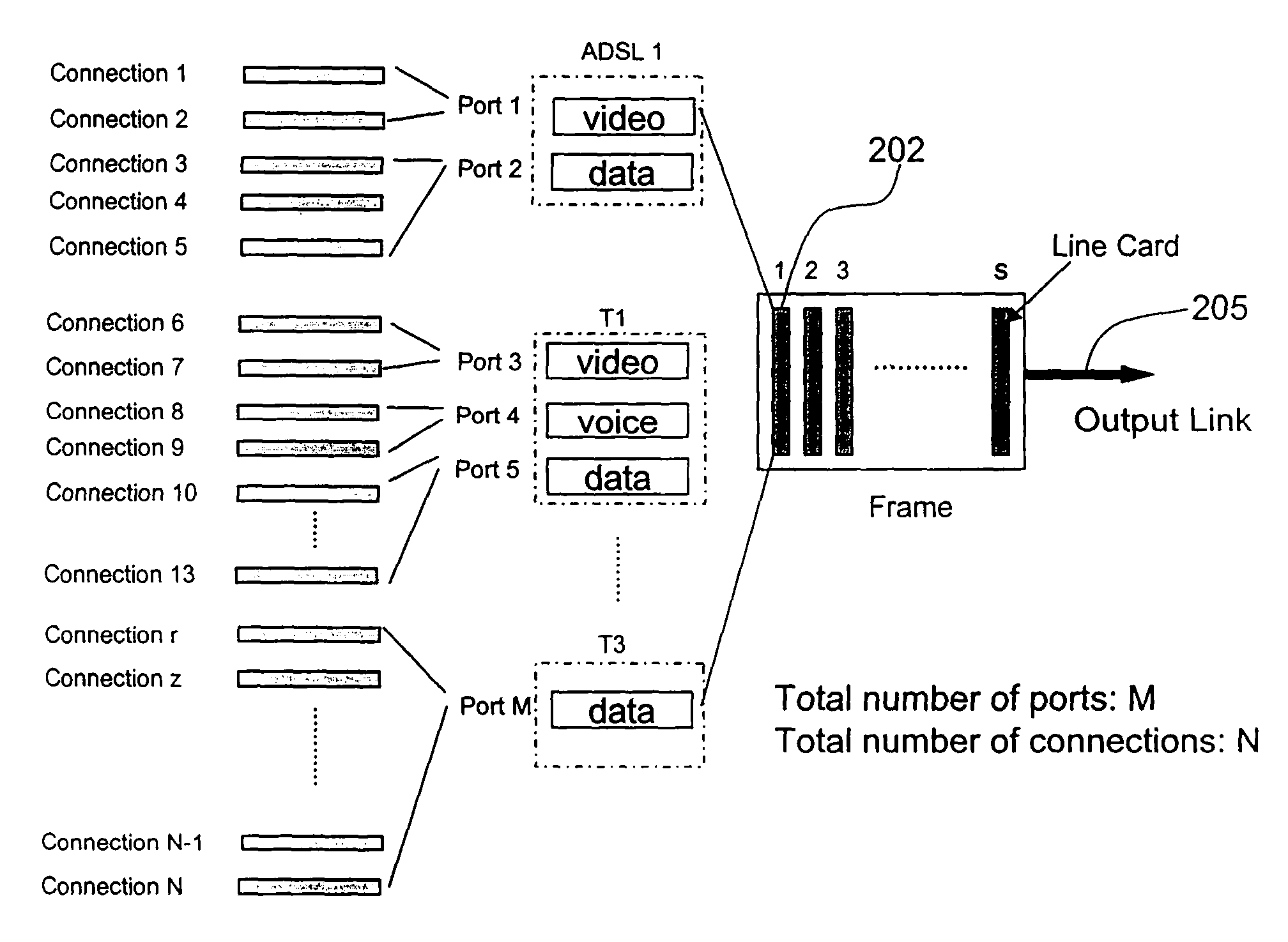Network traffic management system with floating point sorter
a network traffic management system and sorter technology, applied in the field of computer and data networking, can solve problems such as increasing die size, and achieve the effect of allowing processing (sorting) of a large amount of data and minimal impact on the throughput of data through the system
- Summary
- Abstract
- Description
- Claims
- Application Information
AI Technical Summary
Benefits of technology
Problems solved by technology
Method used
Image
Examples
case b
[0072] If bit_5 location in the bit map is 0, that means no other TS entry has the same exponent value. In this case, we need to add TS to the sorter starting from the current layer. We need to get a pointer (e.g., Pt_a in FIG. 7) from a free list (see memory map of FIG. 5), and use PB+5 as the address to store it in body, this is the pointer to next TS layer. Finally we need to set the bit_5 location in the bit map to 1 to indicate there is a corresponding TS entry whose exponent value is 5. As an alternative embodiment, the free list would not be needed if fixed mapping is used, for example, if Pt_a in FIG. 7 is the same fixed location in memory.
[0073]Operations on the second layer: Use the Pt_a as address to find the bit map and PB (pointer_to_body) in the head of second TS layer. For ADSL i entry (e, m)=(5, 2), the mantissa value equals 2.
[0074]Case A: If bit_2 location in the bit map is 1, that means there is another TS entry with the same mantissa value. Use PB+2 as the addres...
PUM
 Login to View More
Login to View More Abstract
Description
Claims
Application Information
 Login to View More
Login to View More - R&D
- Intellectual Property
- Life Sciences
- Materials
- Tech Scout
- Unparalleled Data Quality
- Higher Quality Content
- 60% Fewer Hallucinations
Browse by: Latest US Patents, China's latest patents, Technical Efficacy Thesaurus, Application Domain, Technology Topic, Popular Technical Reports.
© 2025 PatSnap. All rights reserved.Legal|Privacy policy|Modern Slavery Act Transparency Statement|Sitemap|About US| Contact US: help@patsnap.com



